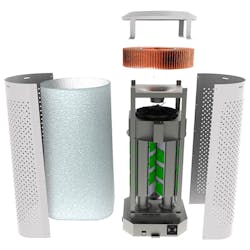The COVID-19 crisis has uncovered gaps in the availability of current medical products for treatment of those afflicted with the virus. In addition, it’s highlighted that big gaps exist between knowing medical practitioners “can” provide some level of remote care versus being able to provide the most effective remote care.
Gaps in Current Medical Products and Availability
The most glaring issue uncovered during the early stage of the pandemic was that the U.S. completely depended on supply chains outside the country. In ordinary times, such a situation may not be an issue as long as demand and supply are aligned globally. However, when stressed, or over-stressed, as the global supply chain was by the rapid escalation of the virus, the U.S. was in a distinct disadvantage to prioritize for its own crucial medical needs.
Such was the case for PPE where, in the early days, it was incredibly difficult to secure product. However, it went beyond simple PPE to include the well-known situations related to ventilators, blood oxygen sensors, thermometers, etc.
To solve the shortage problem, many avenues were tried that led to unreliable sourcing, unacceptable delivery times, and price gouging. To some degree, the U.S. was able to scale up its manufacturing, ramping it up in crisis mode. Now, U.S. companies realize that having some manufacturing capability in the U.S. for pandemic-related consumables and devices is of critical importance and will be building out the needed infrastructure. This is akin to the stockpiling of strategic reserves, as we do with crucial commodities such as oil.
In addition, the demand for supplemental products became apparent in both healthcare and home settings. One example is the need for simple breathing-assistance technology (see figure). In the U.S., it’s uncommon for hospitals to buy the latest and greatest, most feature-rich forms of ventilators. Under normal conditions, even though such technology may be overkill, having a relatively small need for sophisticated ventilators makes sense.
However, we all saw what happened when there was a mass population suffering from the same disease. In such situations, the need for less complex breathing aids became apparent. That is, devices that are simpler in nature and less expensive but are still suitable for the treatment of COVID-19 in terms of recovery.
Lastly, there was no IT infrastructure available to tie the location of medical supplies to the sites with greatest demand. It was quite ad hoc in how critically needed resources were logistically managed. The gap here could have been handled if a more robust infrastructure was available so that available supplies could be better paired with demand.
Gaps in Remote Care
It was not days or weeks, but rather months between the time the crisis escalated and the ability for patients to have safe, direct, in-person care with their normal healthcare provider. Those of us in the technology domain knew that the possibility for efficient remote healthcare has been feasible for years. In some cases, early adopters were experimenting with remote healthcare implementation.
However, once COVID-19 hit, remote healthcare had to rapidly move from feasible to full-scale deployment. This uncovered gaps or areas of improvement for remote healthcare.
Before examining the gaps, it’s important to look at the infrastructure that worked exceedingly well. Certainly, the use of web conferencing, video conferencing, and other business-oriented communication tools (i.e. Slack, email, etc.) existed long before the recent crisis. Those of us in the business for a long time recall the days when video conferencing was slow, buggy, and quite non-intuitive.
In the background, though, these tools were gradually improving in both performance and ease of use. For example, a relative newcomer, Zoom, has been a standout. Likewise, the backbone broadband infrastructure provided by cable and cellular providers has steadily increased in bandwidth and data capacity.
Despite never anticipating such a ramp in demand, the combination of these digital communication tools and fast networks performed in an incredibly reliable way. While not ubiquitous, widespread availability of these tools performed exceedingly well at allowing patients and healthcare providers to interact in an efficient manner when in-person meetings were out of the question.
As for the gaps, it’s one thing to have a video conversation with one’s physician, but the situation could have been greatly aided with a wider availability of home-based data-acquisition systems. For instance, there was a gap in the availability of fast and reliable temperature monitoring. Another example was the sudden need for vast quantities of reliable, simple-to-use means for blood-oxygen-level monitoring.
Opportunities
As in any crisis, there’s always opportunity. Technology gaps in hardware and software as well as manufacturing infrastructure need to be addressed as we (hopefully) start moving out of the current crisis. Those of us in the engineering profession will be contributors to the technology-based solutions that will hopefully better prepare the country for the next viral pandemic.
Mitch Maiman is President of Intelligent Product Solutions.

